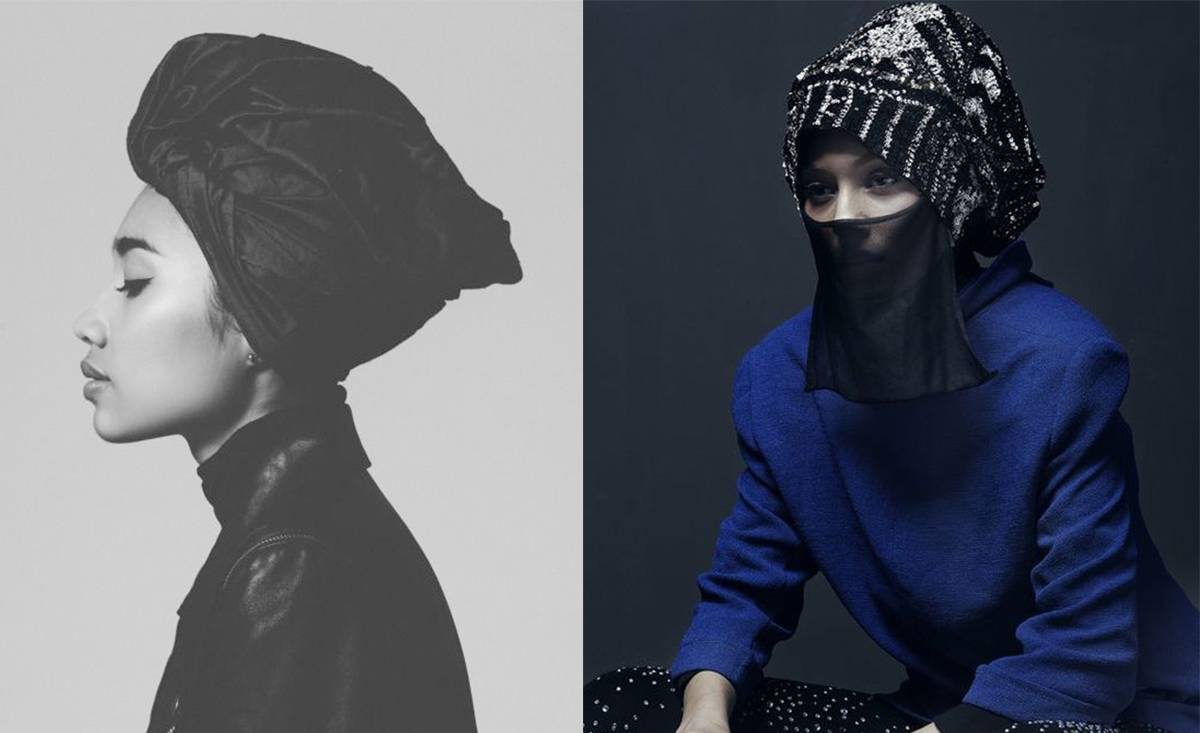
fashion’s various faces .
The face of fashion is changing. Literally: the blond, slim girls who adorn the catwalks and magazines are now joined by plus-size and 50-plus models, by black and Asian women, by Muslim women wearing hijabs, transgender and visibly disabled women. Why is this happening and why is it happening now?
For years, the world of fashion appeared to be ruled by one type of woman: young, white, tall and slim. This fact has been criticised for years: where are the black women? Where are the women with breasts and buttocks? Why do so few women recognise themselves in models in the first place? Did pressure from society cause a breakthrough? It seems that we’ve never seen so many different faces and bodies in shows, magazines and advertising campaigns. Highlight so far: Zeeman’s commercial, in which a woman with a leg prosthesis shows off her tights. Everyone’s got beautiful legs!
Inspiring (role) models
(High) fashion too is now aware of the fact that older ladies are more than consumers of incontinence pants and denture adhesives. Those in their 50s, 60s and 70s are now successfully employed to sell clothing, accessories, make-up and luxury cosmetics. Usually, it does not involve ‘ordinary’ older women, but role models, women who, as a result of their way of life, inspire and motivate others. One example is British actress Helen Mirren (1945), who has been the brand ambassador of L’Oréal Paris since 2015. With her style and personality, she is able to make getting older look attractive!
Character and spending power
For L’Oréal and other brands it is of course particularly important that the growing group of older women offers plenty of opportunities. Career women – a relatively new concept, because in the ‘old’ days, women stayed at home – are more important from an economic point of view as they get older. They have more to spend than women at the start of their careers. Also, these women make their own decisions when it comes to how they spend their money, they are no longer dependent on a husband.
Attention!
Older models are used to create a connection with (the purse of) the older target group – and it works. Diversity can also be used to draw attention, to generate word of mouth marketing and to create brand engagement. The Zeeman tights commercial is an excellent example of that – and it works too. HEMA’s campaign of 2011, in which a male model proves that HEMA’s push-up bra does give you two extra cup sizes instantly, became world news. Did that particular campaign generate more sales? We’ll never know. But everyone was talking about it, which is always good news.
Economic emancipation, blogs and vlogs
Addressing a target group with spending power and generating PR value are two important drivers behind the growing diversity in the world of beauty and fashion. However, the (economic) emancipation of other groups and Internet access mean that the world of fashion no longer is exclusively young&slim&white. There are dozens of influential beauty and fashion blogs written by and for black women, women who have lost their hair due to illness or who miss a limb, women with a plus size, older women, tall or short women, women who wear modest clothing because of their religion and all kinds or other subsidiary groups. Those subsidiary groups have some things in common: they are self-assured, they have access to (their own) media, and they spend money on clothes, accessories and beauty products. The bloggers and vloggers understand their followers and give them what they need. Attention, information, role models and above all: the opportunity to identify themselves.
Modest fashion
Speaking of diversity: the popularity of modest fashion in the western world is on the rise. Women of Christian, Islamic and Jewish origin find each other in this modest fashion style with, often, skirts that reach down to their ankles and covered-up arms. The fact that this style is highly fashionable is proven every day by numerous hipster Muslimas (mipsters) on their Instagram accounts. No wonder then that non-religious women are swayed by the often elegant silhouettes and the possibilities offered by all those different layers of clothing.
Modest fashion has entered the world of high fashion. Indonesian designer Anniesa Hasibuan recently introduced the first hijab to the catwalk of the New York Fashion Week: all 48 designs of her fairy-tale collection were styled with head scarves.
Fashion = society
Fashion is not just about dresses and jackets, about the length of a skirt and the height of a heel. Fashion is about the spirit of the times and the society we live in: your clothing says something about who you are (or are trying to be) and about your position in society. As such, fashion is a way to convey a message in a way everyone understands. Fashion may provoke and exclude, but it can also inspire and invite. In that sense, fashion and lifestyle magazines have a bigger influence on how we think about ethnicity and body shapes that newspapers and news programmes.
Dutch glory: Imaan Hamman and Doutzen Kroes
Beauty comes in all shapes and sizes. Yes, models in the young-blond-tall-slim category are fantastic, but so are models from other categories. To illustrate this, we give you the names of the two topmodels of today: Doutzen Kroes and Imaan Hamman. Both from the Netherlands, both able to inspire us. And they can still do so when they’re 70, you can count on that.

